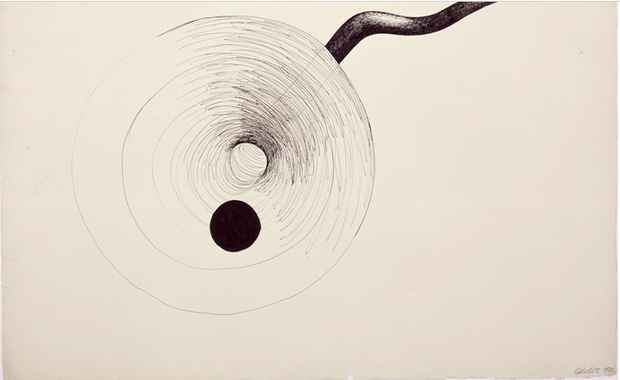“Eureka” Exhibition
The Pace Gallery (508 W 25th St)

This event has ended.
Pace announces Eureka, a group exhibition featuring artists who observe and map the cosmological, metaphysical and scientific through painting, sculpture and music.
Eureka takes its name from Edgar Allan Poe’s eponymous prose poem published in 1848. His last significant publication, the work articulates his ideas on the nature of the universe, combining scientific postulates with his poetic vision, and resonating with later advancements in cosmology and astrophysics such as the big bang theory. Eureka highlights twelve artists from the twentieth and twenty-first centuries who follow Poe’s lead to explore the operations of the universe.
Works by Alexander Calder and Ben Nicholson represent shifting attitudes toward space and time developed within avant-garde circles of the 1930s and 1940s. The British and American artists both signed Charles Sirato’s Dimensionist Manifesto in 1936, which sought to advance the developments of Cubism and Futurism by promoting art that defied formal boundaries and Euclidean geometry. Calder’s ink on paper works reveal his early considerations of space, while Nicholson’s oil relief painting—created as a gift for Calder—aspired to explore the nature of space by creating real depth on a two-dimensional plane.
Tim Hawkinson also explores the fourth dimension with his 2007 Gimbled Klein Basket, which creates an analog rendering of an impossible object. With a porous, gridded bamboo structure, he recreated the Klein bottle and suspended it from the ceiling like a Calder mobile, envisioning an object that is at once knowable and of another dimension. Julie Mehretu similarly explores the invisible in her abstract paintings that refer to diagrams and mapping. Eschewing specificity, Mehretu at once creates vivid spaces through her energetic lines while also attempting to chart impalpable forces, social or cosmic.
Alfred Jensen and Yalla Yalla Gibbs Tjungurrayi transform elaborate cultural philosophies into intricate systematized paintings. Tjungurrayi’s acrylic on linen painting alludes to Pintupi beliefs and attempts to map cosmic and temporal systems with its geometric motifs. A self-taught student of color theory and non-western philosophies, Alfred Jensen communicates his broad philosophical and mystical knowledge with his paintings. His colorful works diagram a personal system of knowledge that transcend any individual civilization or epoch, connecting disparate civilizations and bodies of knowledge such as Pythagorean mathematics and the I Ching.
Emmet Gowin’s aerial landscape photographs document both natural and human destruction inflicted on the environment. His crisp images render nearby sites alien, serving as relics of a shifting ecology. James Turrell incites a kindred experience of awe with his manipulations of earth, architecture, and light. A model for a chamber in his still-developing Roden Crater project in the Painted Desert, Turrell’s Craters Eye renders a space inside the dormant naked-eye observatory. Oriented toward the vast and lambent Arizona sky, Turrell’s project also engages the deep sense of history and time that pervades its Painted Desert setting.
James Siena and Keith Tyson probe the space between systematic operation and unpredictability. In his algorithmic enamel on aluminum paintings, Siena imposes a set of rules on his process, yet he pushes the limits of these rules through his handmade moves, balancing what he refers to as Dionysian and Apollonian impulses. Resonating with early conceptual art practices and John Cage’s aleatoric music, Keith Tyson’s Fractal Dice sculptures begin as cubes but transform as the artist rolls a die, altering the sculpture’s appearance based on prescribed parameters corresponding to each number on the die.
The back room of the gallery will feature the music of the Sun Ra Arkestra and Edgar Varèse. The latter sought to develop a new music for the machine age and conceptualized his music as moving beyond the boundaries of space, while Sun Ra aspired to transcend the realm of the earthly with his experimental jazz. This soundtrack for the exhibition signals a move away from the material toward other dimensions of space and time.
Media
Schedule
from May 02, 2015 to August 14, 2015